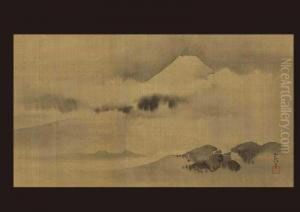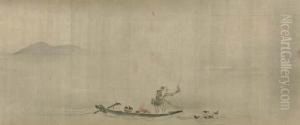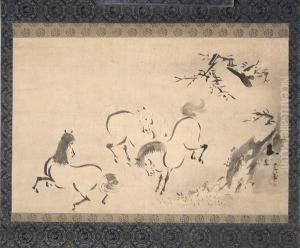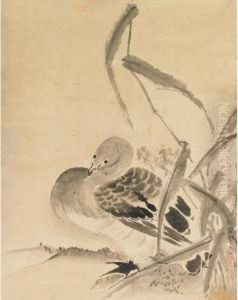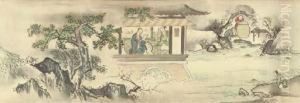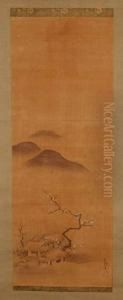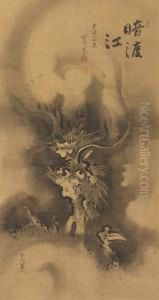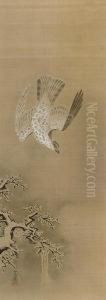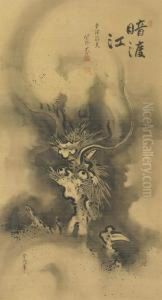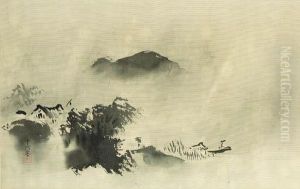Kano Tsunenobu Paintings
Kano Tsunenobu was a prominent Japanese painter born in 1636, during the Edo period, a time when Japan was under the rule of the Tokugawa shogunate. Coming from the esteemed Kano family, which dominated Japanese painting for over three centuries, Tsunenobu played a significant role in the continuation and development of the Kano school of painting. This school was known for its blend of Chinese-inspired themes and techniques with indigenous Japanese elements, creating works that were deeply appreciated by the warrior class and aristocrats of the time.
Tsunenobu received his artistic training under the guidance of Kano Tan'yū, one of the foremost painters of the early Edo period and a key figure in the Kano school. Under Tan'yū's tutelage, Tsunenobu honed his skills in the traditional styles of the school, excelling in both monochrome ink paintings and polychrome works. His dedication and talent quickly elevated him within the ranks of the Kano school, and he became one of its leading figures.
Throughout his career, Tsunenobu was commissioned to produce artworks for various daimyo (feudal lords) and for significant architectural projects, including the decoration of castles and temples. His works often depicted landscapes, figures from Japanese literature and history, and themes from nature, embodying the aesthetic ideals and philosophical concepts of his era.
Tsunenobu's contributions to the Kano school and Japanese art were not limited to his own creations. He was also a dedicated teacher, passing on the traditions and techniques of the Kano school to the next generation of artists. This ensured the continuity and evolution of the school's style, adapting to changing tastes while maintaining its core principles.
Tsunenobu's death in 1713 marked the end of an illustrious career, but his legacy lived on through his students and the many works he left behind. His paintings are still celebrated today for their beauty, technical mastery, and the window they provide into the culture and aesthetics of Edo-period Japan. Tsunenobu remains a pivotal figure in the history of Japanese art, representing the enduring appeal and influence of the Kano school.
